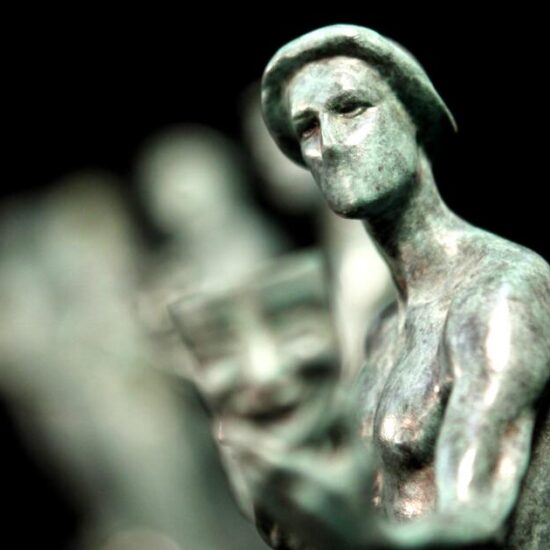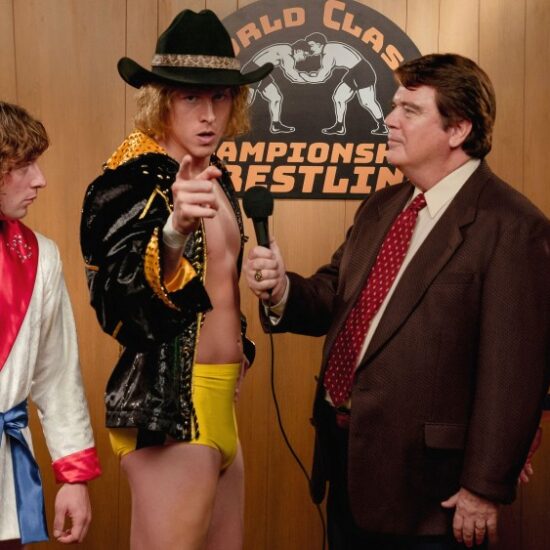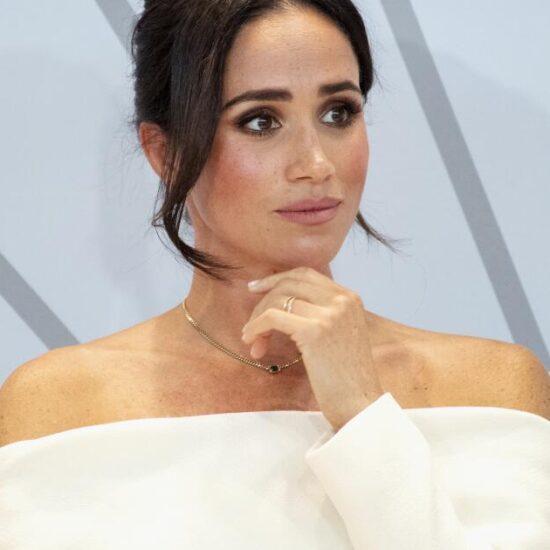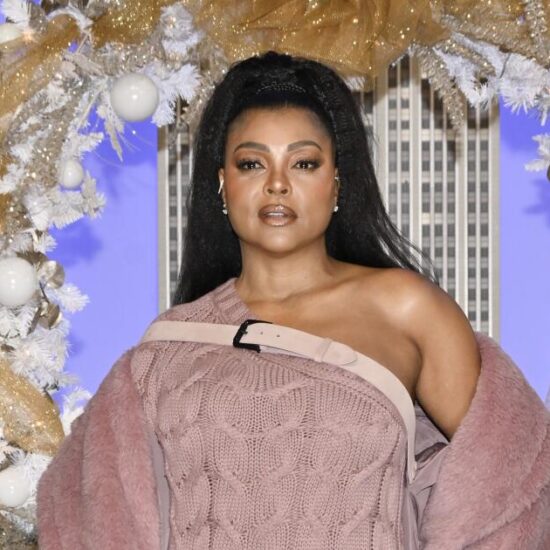A painting by Alannah Farrell welcomes you at the entrance of art collector Arushi Kapoor’s Beverly Hills home. The bold painting displays the back of a near-naked body on a couch. The person depicted wears nothing but a harness and tube socks.
Turning into the living room toward Kapoor’s own couch, a large plastic rainbow American flag hangs from a broom. On the opposite wall, Ricky Sencion’s “collage of ideas” is materialized on a large pink canvas with cartoon sheep, popsicles and cursive phrases. The pieces are all part of Kapoor’s latest exhibition, “Decoding Americana’s Queer Sensibilities,” which turned her personal home into a group show with LGBTQ+ artists.
The show, curated by Kapoor and Steve Galindo and ending Friday, questions what’s considered American, pushing viewers to expand the definition to include the multicultural and multidimensional landscape — one that is unapologetically queer. The decision to team up on the venture — two years in the making — stemmed from the duo’s interest in amplifying underrepresented voices in the L.A. arts scene.
“I realized that there is a parallel art scene going on for the LGBTQ+ community that is not fully given access to the quintessential art scene of the museum curators,” Kapoor said.
A painting by Alannah Farrell of someone nearly nude, in a harness and tube socks, on display at “Decoding Americana’s Queer Sensibilities.”
(Mara Friedman)
Galindo focused on nurturing the relationships he had with community organizers, curators and other galleries to bring together a lineup of artists for the group show. The final artists include Evangeline AdaLioryn, Farrell, Stuart Sandford, Little Ricky (a.k.a. Ricky Sencion), Mia Weiner, Sara Sandoval, Duane Paul, Naruki Kukita, Sophia Gasparian, Joey Brock, Miguel Angel Reyes and Ruben Esparza.
Galindo took inspiration from the LGBTQ+ art spaces and shows that developed organically, like Esparza’s “Queer Biennial” and Guadalupe Rosales’ archival projects documenting Chicano and Latino ephemera from the 1970s to ’90s.
“Within that archiving and historicizing work was born my passion to bring together the trans and nonbinary community and queer artists,” Galindo said. “I want to help them reach that level where their work can become historicized and archived.”
There are “high barriers to entry” into the art world, especially for underrepresented artists, Kapoor said. The goal of the exhibition is to bring artists to the attentions of big curators, collectors and gallerists so that their work can live on walls outside her home. Prior to the exhibition, the artwork was portrayed in a very public way: on Hollywood Boulevard as a digital billboard at the Fox Theatre.
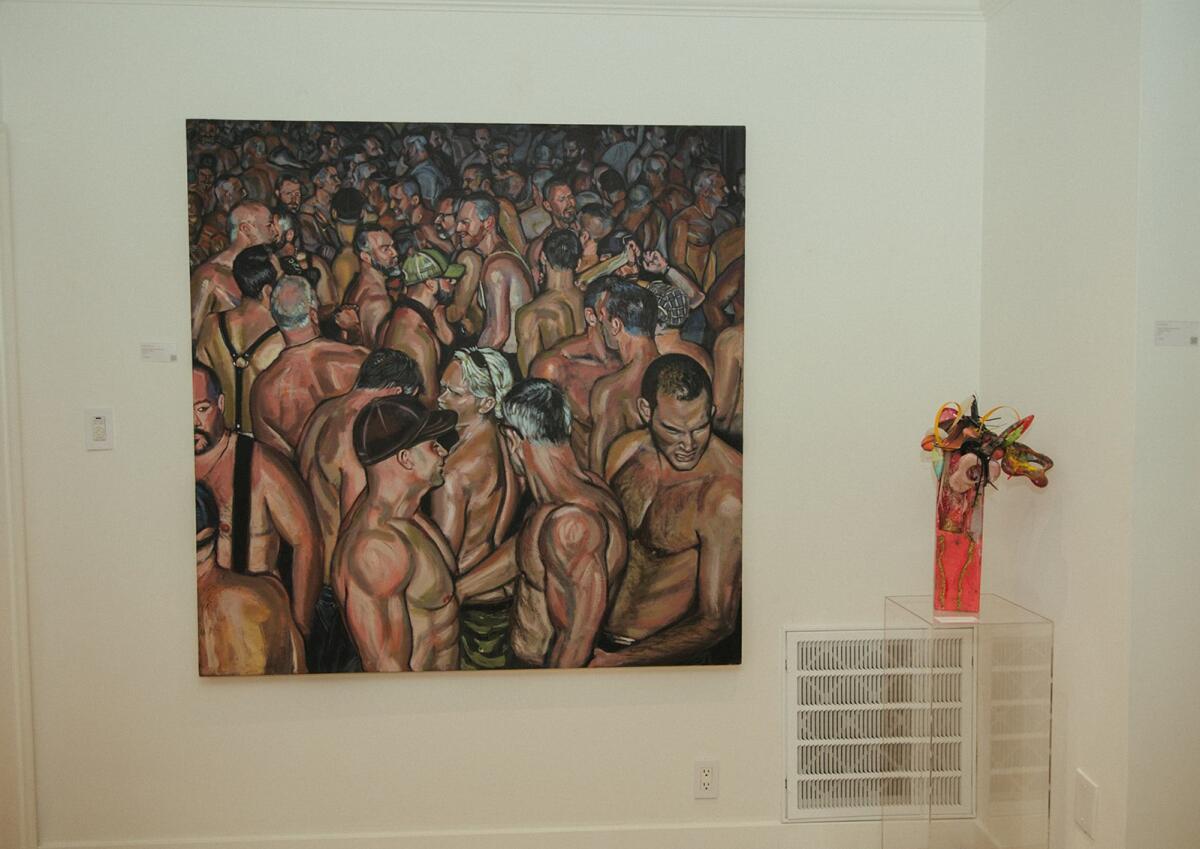
“BigMuscle Folsom Dance in the Light” by Miguel Angel Reyes.
(Mara Friedman)
“Queer artists historically have been a very big part of the contemporary American art scene,” Kapoor said, pointing to artists Andy Warhol and Keith Haring.
“We don’t really associate them primarily with their identity,” Kapoor said of the artists. “It’s always the artwork first and then their identity comes second. For emerging artists, it’s the opposite.”
Paul’s assemblage pieces combine body parts — arms, hearts, penises and vaginas — and break them down into a deconstructed body . Even the work he created through the City of Los Angeles Individual Master Artist Project grant, currently being shown at Barnsdall Park in East Hollywood, is intrinsically connected to his identity.
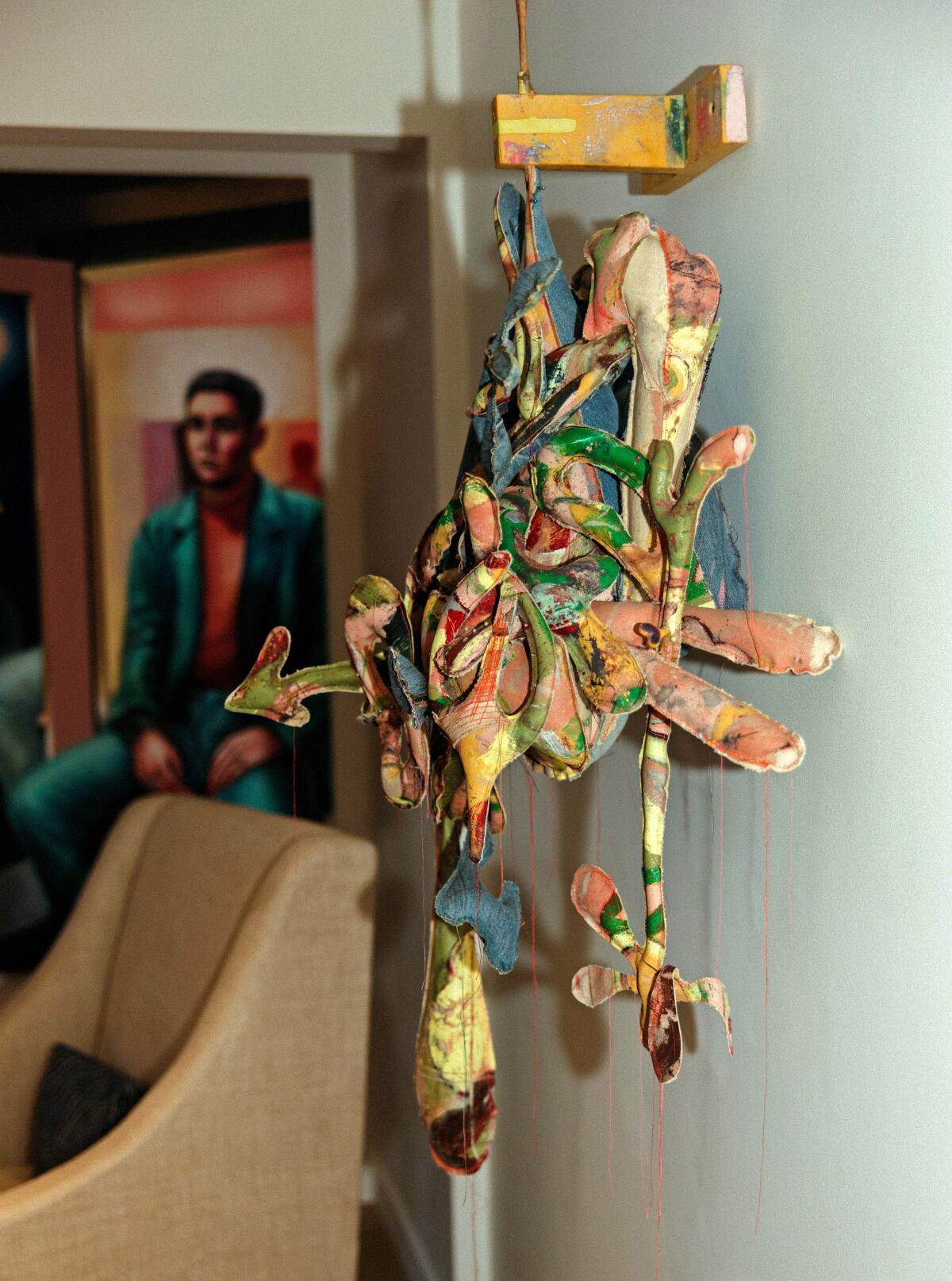
Installation view of a sculpture by Duane Paul made of denim.
(Mara Friedman)
One of the works on display in the exhibition is made of denim he collected at Goodwill, incorporating the essence and memories of previous owners into the piece. His abstract creations reflect the experiences of people of color, especially Black queer men, in the ways he marks and stitches the work.
“I’m combining my photography work, my painting work and my sculptural work into one presentation of ideas that explore gender, sensuality, sexuality, race — sometimes just playing with shape and composition — which always leads me back to whatever I’m experiencing in the world,” he said.
Galindo’s curation is also inspired by his Black Caribbean ancestry, Indigenous roots and first-generation Americaness. He wanted to explore identity and its intersection with gender and sexuality.
In an effort to uplift Black, brown and Indigenous artists, Galindo emphasized looking beyond the traditional mediums of sculpture and painting, and “introducing new forms like spray painting and stencil and street art as viable mediums that are beautiful, that are worth being collected and being historicized,” he said.
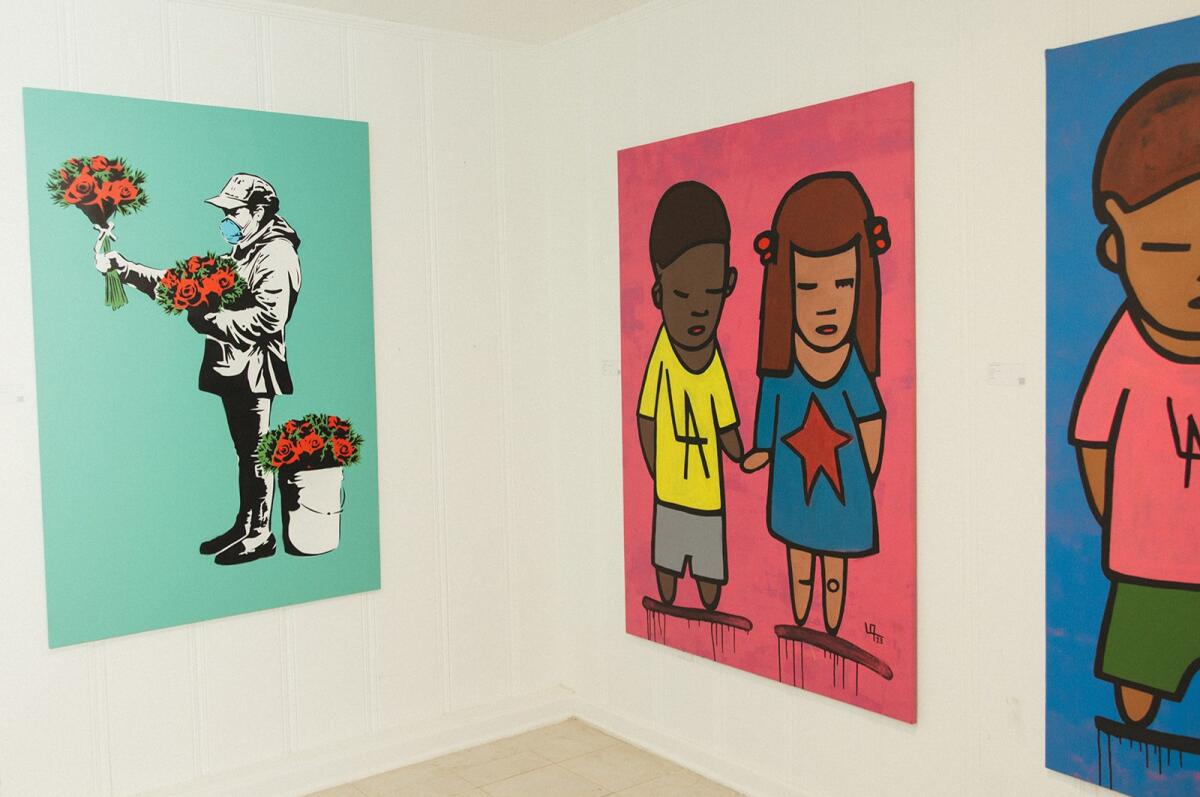
Vibrant, graffiti-style paintings by Sara Sandoval and Sophia Gasparian on display at the “Decoding Americana’s Queer Sensibilities” group exhibition at Arushi Gallery.
(Mara Friedman)
For the exhibition, Kapoor moved out her private collection and adorned her home with art to show how viewers could display the diverse art pieces in their own homes.
“I really want everyone who’s walking through the house to imagine it in a homely setting, because that’s where we aspire and we want the artworks to go and to be appreciated,” Kapoor said.
By expanding the spaces that art by LGBTQ+ artists take up, Kapoor hopes it can inspire a future generation of artists, like it did for Weiner.
Weiner grew up seeing queer artists in museums here and there, from Catherine Opie to Nick Cave, and each instance offered a glimmer of hope.
“My work has been shown in lots of different contexts, but I haven’t been in a show that is really just around identity,” Weiner said. “It’s such an important part of the work.”
Weiner’s artistry explores gender and the psychology of human relationships through textile portraits of often genderless people. Textiles already have a gendered history seeped in feminine labor. By creating with the medium, she aspires to “remake feminist legacies” and break the boundaries of textiles. Weiner begins with a photo and creates the work with a digitally assisted loom. While the digital side helps with the details, she alters some of the images to portray headless figures and hidden identities — giving the bodies agency.
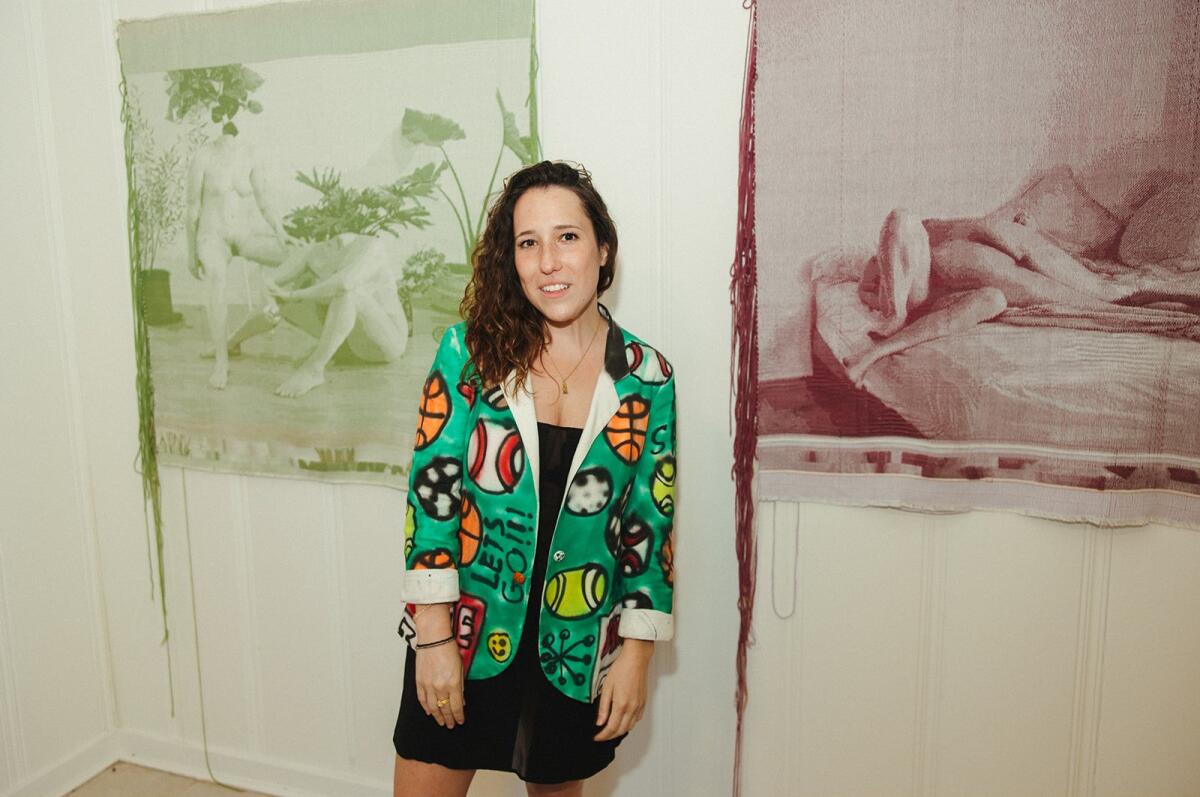
Artist Mia Weiner stands in front of her textile artwork depicting unidentifiable bodies.
(Mara Friedman)
“They gaze at us, but we can’t really meet their gaze,” she said. “That’s where our intellect is. It’s our sight.”
Her art often strips sexuality and eroticism from the body.
“I think when you look into those images without heads, your body becomes the body in a different way,” Weiner said. “It’s a visceral experience for me versus a narrative of two specific people, and I wanted it to be more about this emotional state and want to feel the same feelings.”
For AdaLioryn, exhibitions like “Decoding Americana’s Queer Sensibilities” can be melancholic. While the shows themselves are celebrations, the LGBTQ+ artists’ creations are often byproducts of pain. There’s a deep message simmering below the canvas, the ceramic and the fabric. This is especially true for her, as a trans woman.
AdaLioryn creates ceramic works that are centered around fragility.

Ricky Sencion’s collage painting with sheep, phrases and the 7-Eleven logo on display at the “Decoding Americana’s Queer Sensibilities” group exhibition at Arushi Gallery.
(Mara Friedman)
“Largely, my work was made out of the need and necessity to protect trans people,” she said. “I started many years ago in ceramics, and the first things I made were weapons and armor.”
“It’s a protection sigil,” AdaLioryn said of her ceramic God’s eye with bird wings cast on each side of it.
“I’ve developed, over time, my own kind of worshipping of shapes, sigils and symbology,” she said. “And so this was made as a protection spell.”
AdaLioryn said she found comfort in bringing her work to Kapoor and Galindo because they understood the need to uplift underrepresented artists. As a trans artist, she said it’s hard to feel included — not only in non-identity-specific shows, but also in LGBTQ+ spaces.
“There’s such a tumultuous relationship with the T in LGBTQIA+ where, historically — and even now — I really question how the rest of the LGBTQ shows up for that T,” AdaLioryn said.
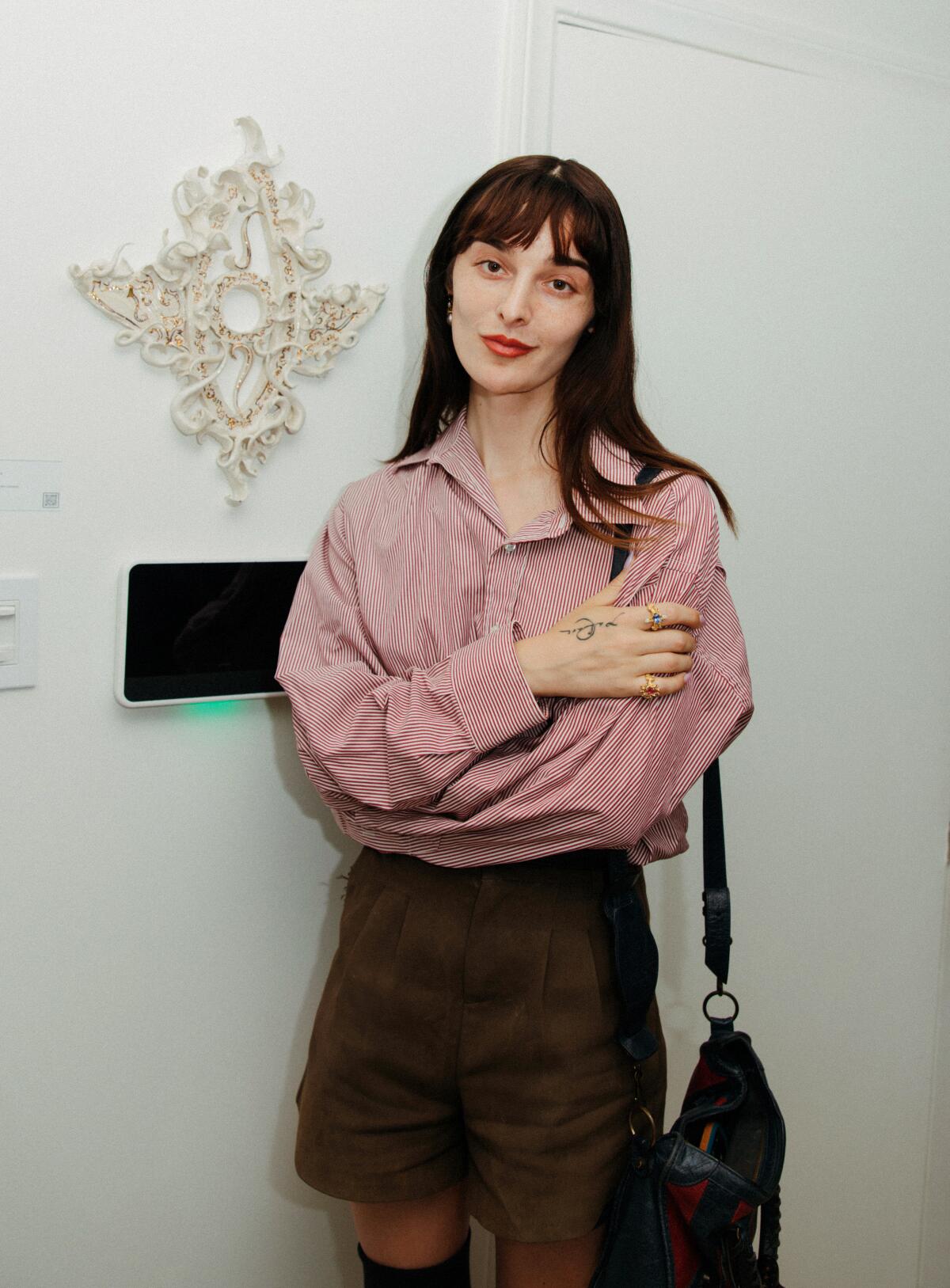
Artist Evangeline AdaLioryn stands in front of her ceramic artwork.
(Mara Friedman)
AdaLioryn, who also has a solo show at Sebastian Gladstone coming in April, described the opening of the exhibition as radical in bringing so many artists together in front of the art market. “That literally is deconstructing and reconstructing something historical,” she said.
“That ability to communicate with each other and also be highlighted in a place of safety is new and it’s beautiful and it’s important,” she added.
Kapoor sees a “mental blockage” when it comes to people’s perceptions of queer art. Walking through her home, viewers will see everything from abstract sculptures to graffiti art. Some depict queerness directly, showing men under a queer gaze and gay couples holding hands, while others uphold the tone of queerness in classic portraiture.
“The goal is for the viewer, as they’re walking through the exhibit, to realize that there is no construct, there is no box, there is no one type of artwork because there are many types of people in a community,” Kapoor said.









